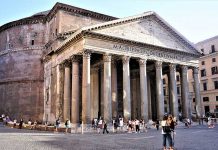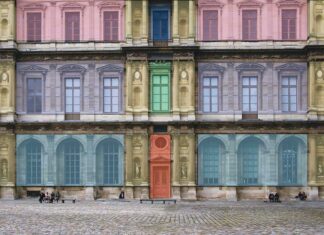Peripteral temple, also known as peripteros, is a type of ancient Greek temple characterized by a row of columns surrounding the perimeter of the temple structure. It was mostly preferred in buildings used for religious and ceremonial purposes. Peripteral plan dates back to the 5th century BC, the zenith of the classical Greek period.
Temples with peripteral architecture were built to honor the gods and goddesses of ancient Greece. However, these temples didn’t carry only a religious purpose but also had political and cultural significance.
In this article, we will explore the history, architectural analysis, function and significance of peripteral temples, as well as examples of famous peripteral temples like the Parthenon and the Temple of Apollo at Bassae.
Let’s start with the history of peripteral architectural style.
History of Peripteral Temple
The historical development of peripteral temples dates to ancient Greece. The design of these structures evolved over time, as architects experimented with different techniques to create more immersive and awe-inspiring structures.
One of the earliest examples of a peripteral temple is the Temple of Artemis at Ephesus, built in the 6th century BC. Located in western Turkey, this temple featured a double row of columns surrounding the central sanctuary.
The other notable example of the peripteros style is the Parthenon, which was built in the Acropolis of Athens in the 5th century BC. It is perhaps the most famous example of this style. The Parthenon had a single row of Doric columns surrounding the temple.
The Temple of Apollo at Bassae, built in the 5th century BC, is another impressive example. This temple featured Doric columns in the perimeter.
Read Also: Doric Order in Ancient Greek Architecture
Architects have continued to design peripteral temples throughout the ancient Greek and Roman periods. Despite its ancient origins, peripteros continues to inspire architects and designers today.
Numerous modern and contemporary buildings incorporate the essential features of peripteral temple design, from the use of columns to the emphasis on grand entrances and impressive facades.
Briefly, the history of peripteral temples is a testament to the enduring legacy of ancient Greek architecture. These magnificent structures continue to captivate and inspire us today, reminding us of the incredible skill and creativity of ancient builders and architects.
Design and Architecture of Peripteral Temples
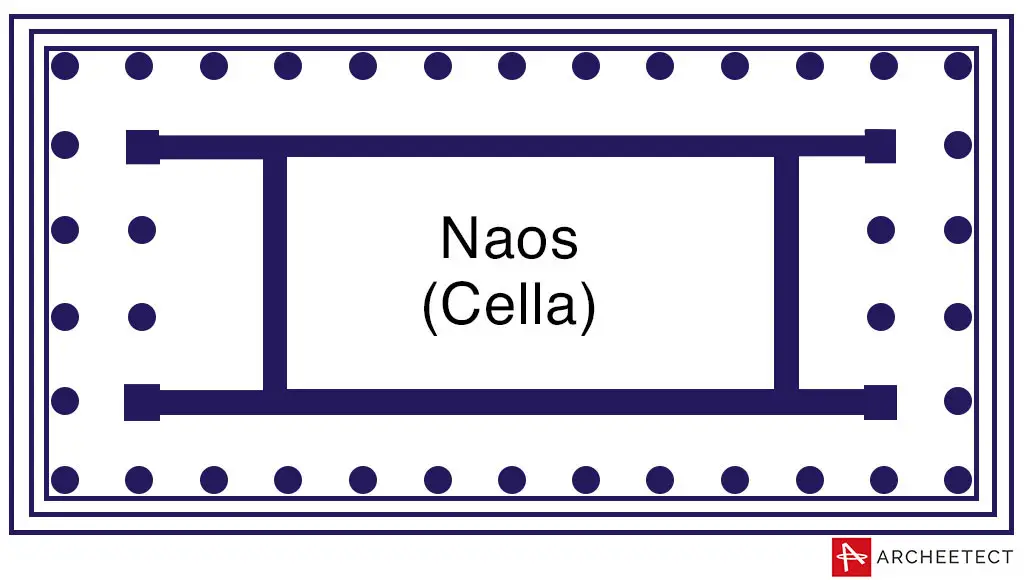
The design and architecture of peripteral temples represent fascinating aspects of ancient Greek culture. The most distinguished feature of these temples is a row of columns surrounding the main structure.
These surrounding columns, also known as the peristyle, are typically made of marble or limestone and they are arranged in a specific pattern. Each column has a base, shaft, and capital, enriching the overall aesthetic of the temple.
Besides columns, there are many important elements that almost all peripteral temples in ancient Greek architecture had.
The first part that we should mention is entablature, which is the section that sits on top of columns. It consists of three main parts: architrave, frieze, and cornice.

The architrave is the lowest part among them. While it is generally unornamented, it is sometimes decorated with relief sculptures. The frieze is the middle section of an entablature and includes metopes and triglyphs. The uppermost section is the cornice, which is decorated with dentils, meaning small rectangular shapes.
Alongside entablature and columns, there are also triangular pediments and crepidoma sections in these temples.
The design of peripteral structures is not only aesthetically pleasing but also serves a purpose. For instance, columns and entablature used to be designed to carry the weight of the structure, as well as to make the temples look grandeur and glorious.
Moreover, sculptures and decorations were not only used to honor gods and goddesses but also to narrate stories and convey important cultural and political messages.
Next, we’ll talk about the function and significance of peripteral temples.
Function and Significance of Peripteral Temples
Peripteral temples were not just splendid architectural structures, they also served a specific function and held great significance in ancient Greek society. These temples were primarily used for religious and ceremonial purposes, as they were dedicated to the gods and goddesses of Ancient Greece.
People visited these temples to offer sacrifices, make offerings, and pray for blessings. They were also used for festivals and other important events.
Besides religious and ceremonial functions, peripteral temples also had cultural and political significance. They served as a symbol of the city-state’s wealth and power. The existence of a grand temple in a city would indicate its prosperity and dominance in the region.
The other significant role that peripteral temples played was to be used as the treasury of city-states. These temples also contributed to the ancient Greek economy by generating income through offerings and sacrifices made by the citizens.
Furthermore, the intricate decorations and sculptures on these temples told political stories and conveyed crucial cultural and political messages to the citizens of the state.
Influence of Peripteral Temples on Modern Architecture
Just like other ancient structural forms, peripteral temples also have influenced modern and contemporary architecture. These ancient structures have inspired numerous architects and designers for centuries. In this line, there are many modern buildings that incorporate design principles of the peripteros style.
The most obvious example of peripteral temple influence in modern architecture is the use of an external column row surrounding the structure. However, the building techniques and materials of these columns differ, as construction technologies have developed over time.

One of the most famous examples of modern architecture that give the impression of peripteral style is the Lincoln Memorial in Washington, D.C. The memorial features a peripteros design, with 36 Doric columns surrounding the central chamber.
The use of exterior columns, as well as the emphasis on grandeur and symbolism, is a clear reference to the ancient Greek peripteral temples.
Examples of Peripteral Temples
1. Parthenon of Athens
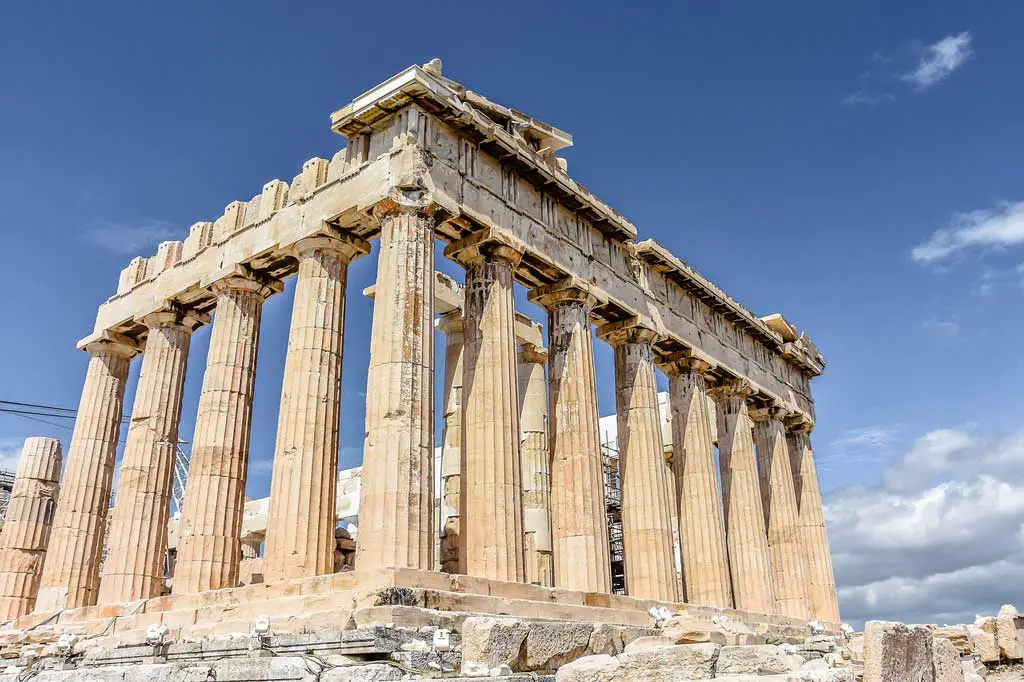
| Architect: | Ictinus and Callicrates |
| Location: | Acropolis in Athens, Greece |
| Construction period: | 447–432 BC |
| Architectural style: | Doric order |
2. Temple of Apollo
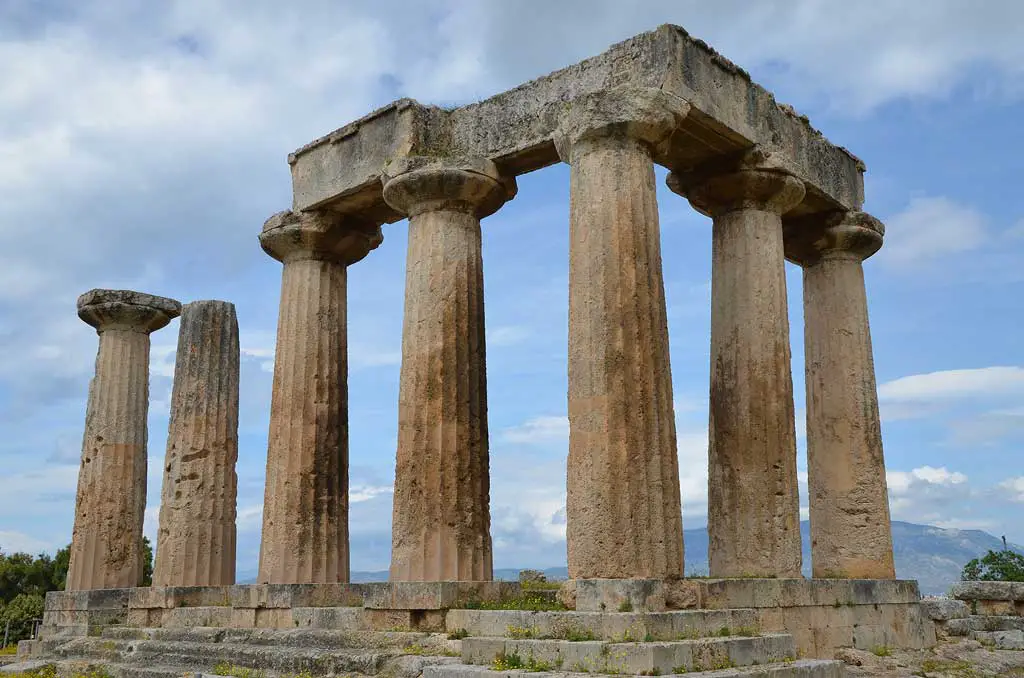
| Architect: | – |
| Location: | Corinth, Greece |
| Construction period: | 540 BC |
| Architectural style: | Doric order |
3. Temple of Hera
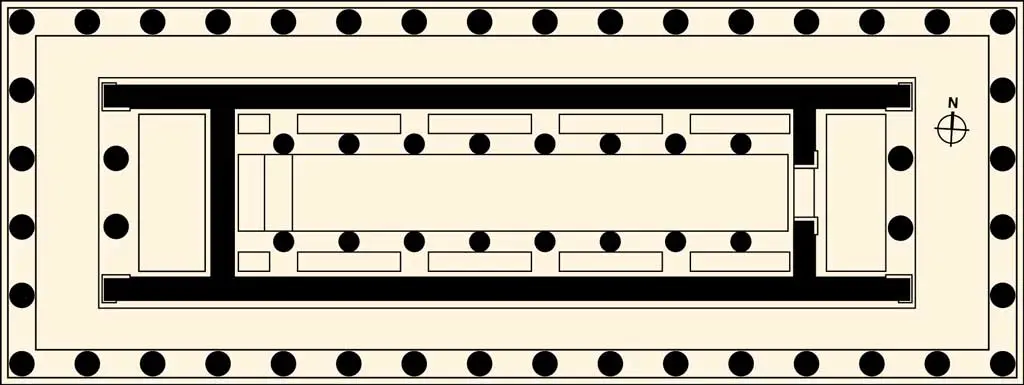
| Architect: | – |
| Location: | Olympia, Greece |
| Construction period: | 590 BC |
| Architectural style: | Doric order |
4. Temple of Zeus
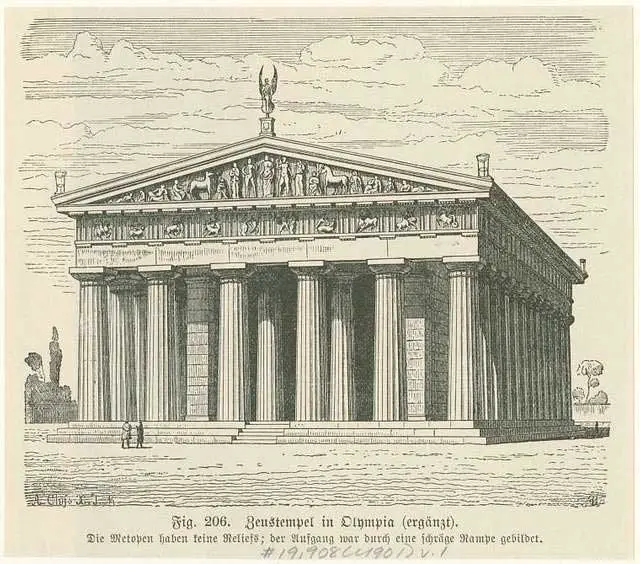
| Architect: | Libon of Elis |
| Location: | Olympia, Greece |
| Construction period: | 460 BC |
| Architectural style: | Doric order |
5. Temple of Hephaestus
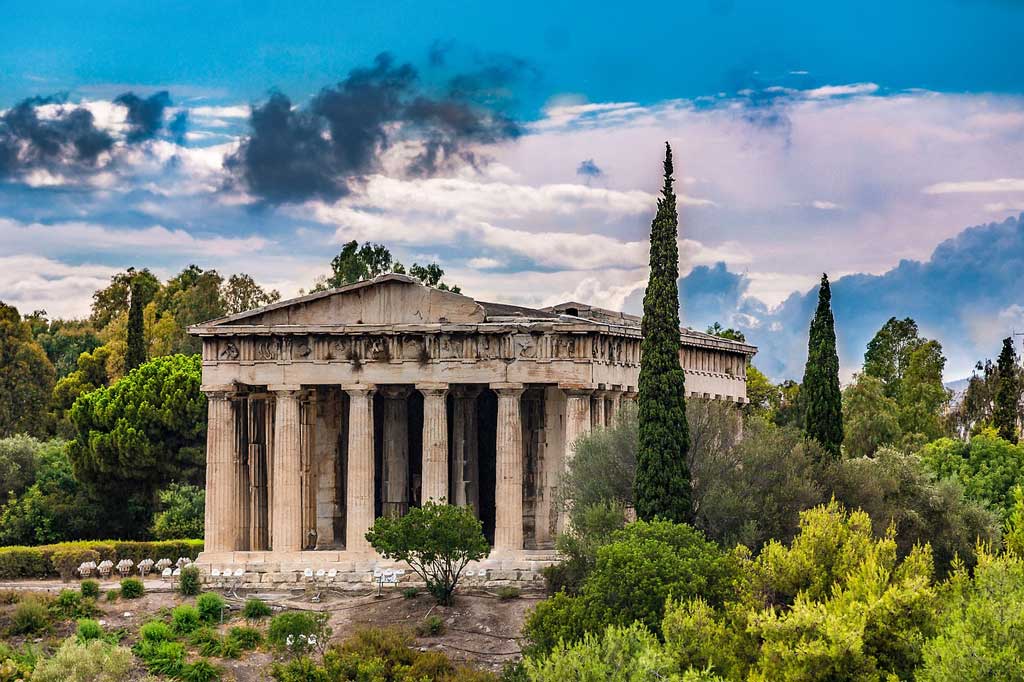
| Architect: | Iktinus |
| Location: | Athens, Greece |
| Construction period: | 449 BC – 444 BC |
| Architectural style: | Doric order |
6. Temple of Poseidon
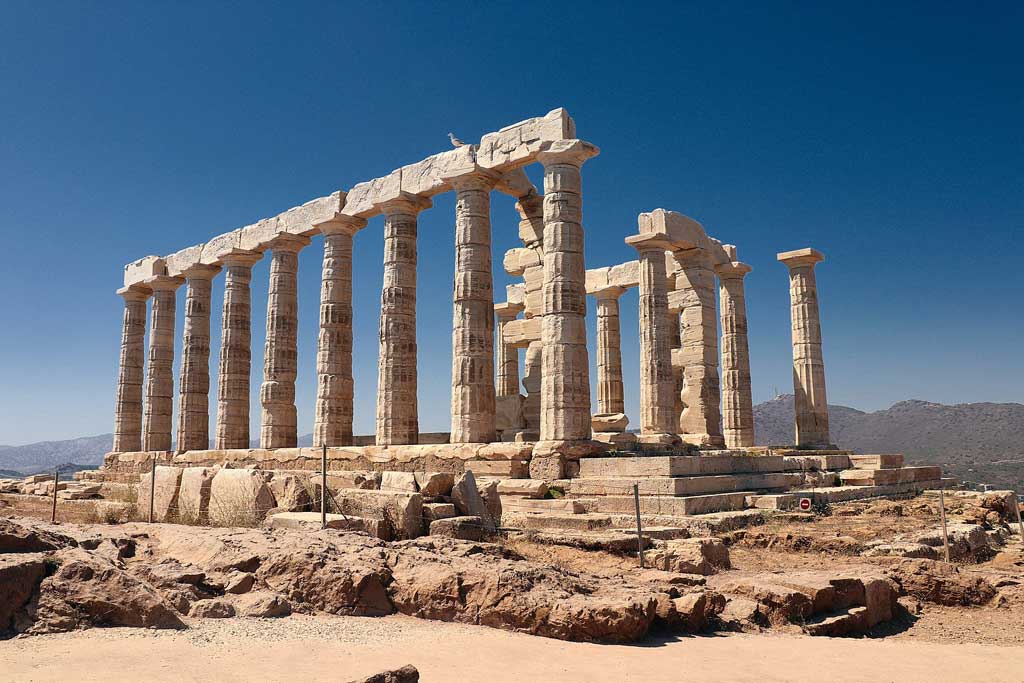
| Architect: | Iktinus |
| Location: | Cape Sounion in Greece |
| Construction period: | 444 BC – 440 BC |
| Architectural style: | Doric order |
7. Delian Temple of Apollo

| Architect: | – |
| Location: | Delos, Greece |
| Construction period: | 470 BC – 300 BC |
| Architectural style: | Doric order |
8. Temple C at Selinus

| Architect: | – |
| Location: | Selinunte, Italy |
| Construction period: | 550 BC |
| Architectural style: | Doric order |
9. Temple of Athena

| Architect: | – |
| Location: | Paestum, Italy |
| Construction period: | 510 BC |
| Architectural style: | Doric order |
10. Temple of Concordia

| Architect: | – |
| Location: | Agrigento, Italy |
| Construction period: | 430 BC |
| Architectural style: | Doric order |
11. Temple at Segesta
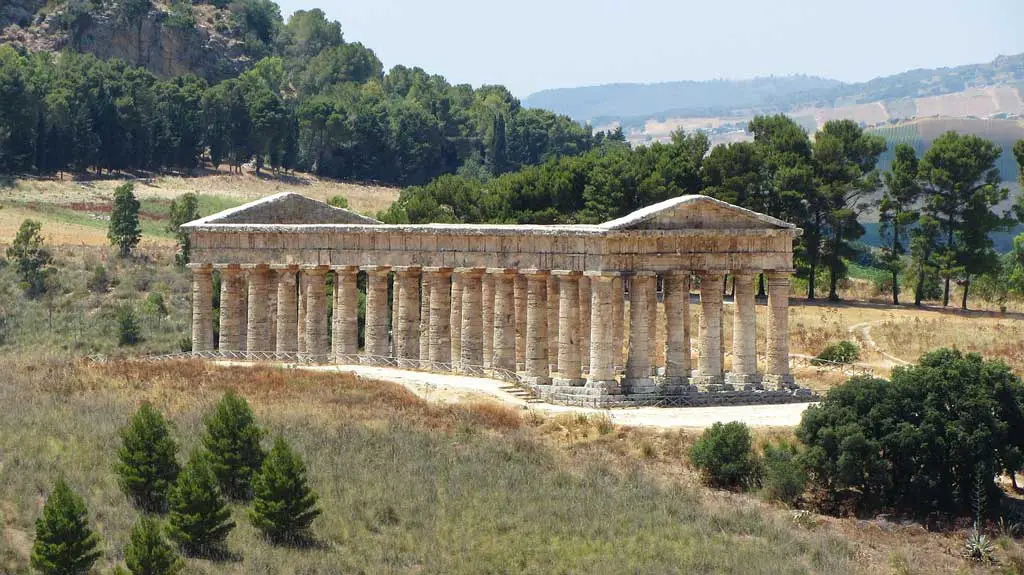
| Architect: | – |
| Location: | Segesta, Italy |
| Construction period: | 424 BC |
| Architectural style: | Doric order |
12. Temple of Athena Polias
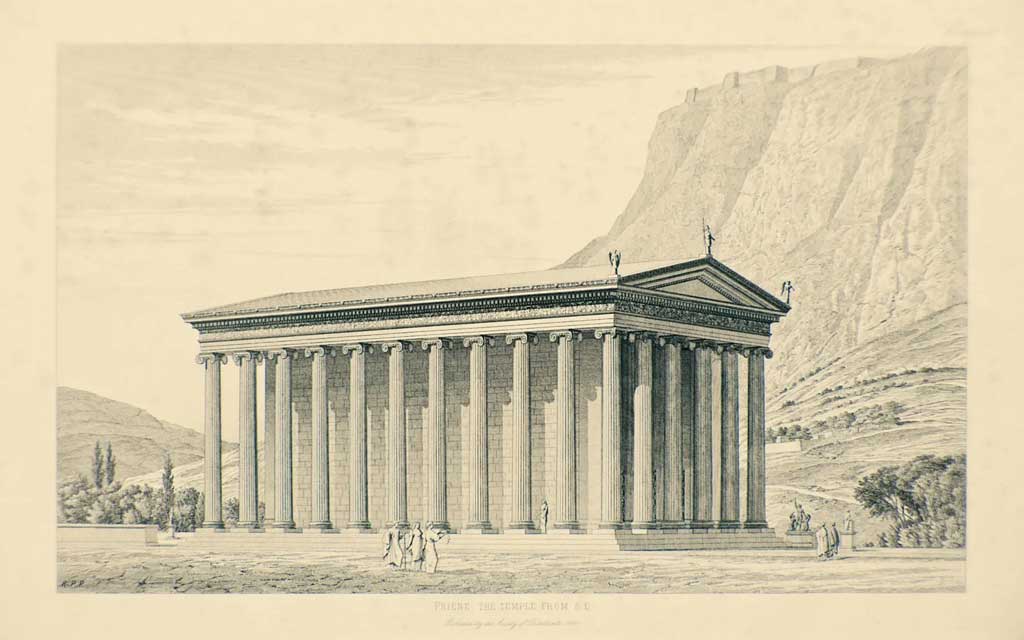
| Architect: | Pythius of Priene |
| Location: | Söke, Turkey |
| Construction period: | 334 BC |
| Architectural style: | Ionic order |
13. Temple of Dionysus
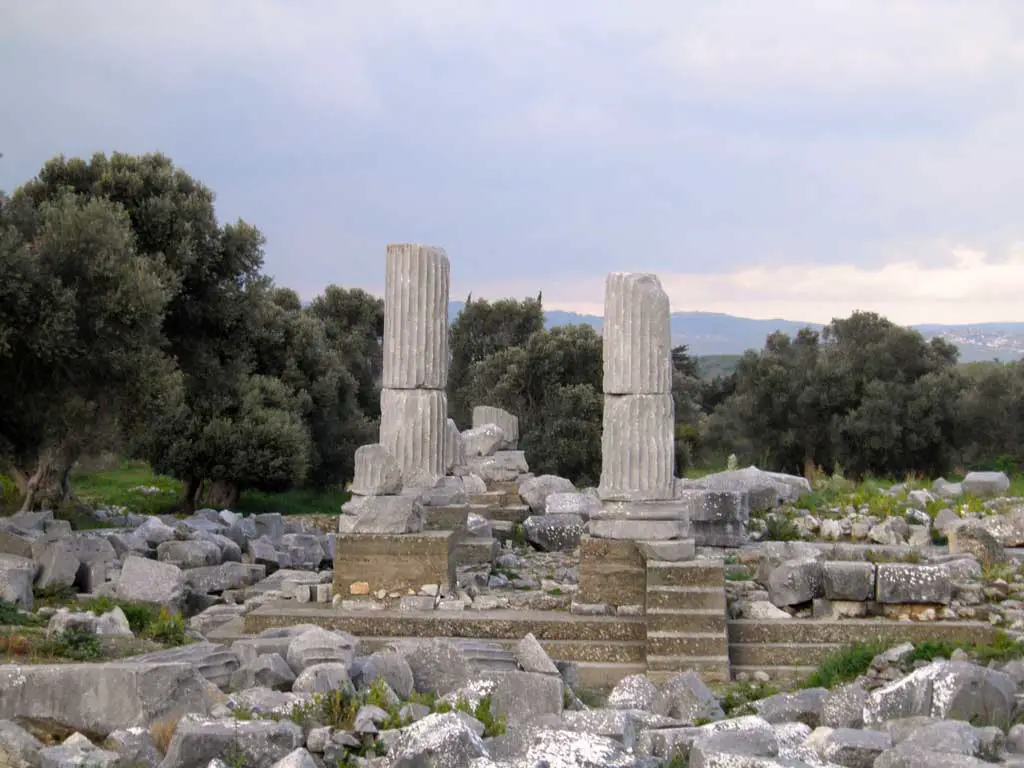
| Architect: | Hermogenes of Priene |
| Location: | Sığacık, Turkey |
| Construction period: | 193 BC |
| Architectural style: | Ionic order |
Conclusion
In conclusion, the peripteral temple is an important temple style in ancient Greek architecture. Mostly used for religious and ceremonial purposes, these temples held critical significance for the society and culture of antique Greece. They had also economic roles as accommodating the treasury of the city-states and generating revenue.
The architectural design of these temples also had a social purpose. They would convey important news and messages about wars and political issues to the citizens through intricate ornaments and relief sculptures.
Peripteral temples are a vital part of our cultural heritage and western’s architectural history. They have impacted not only Greek cities but also today’s built environment, especially monumental structures.
FAQ
A: A peripteral temple is a type of ancient Greek temple distinguished by a row of columns surrounding the main temple structure. These temples were mostly used for religious and ceremonial purposes. They had an important role in both Greek culture and economy.
A: Peripteral temples were built during the golden age of the classical Greek period, specifically in the 5th century BC.
A: The main elements of the design and architecture of peripteral temples are a row of columns (peristyle), the entablature, and the cella (central room). The entablature is made up of three parts: the architrave, the frieze, and the cornice.
A: The main function of peripteral temples was for religious and ceremonial purposes. People used to visit these temples to offer sacrifices, make offerings, and pray for blessings.
These structures were also used for festivals and other important events in city-states. Furthermore, they held political and cultural importance and were an important component of the economy.
A: Some famous peripteral temples are the Parthenon of Athens (Athens, Greece), the Temple of Athena Nike on the Acropolis (Athens, Greece), the Temple of Hephaestus (Athens, Greece), the Temple of Poseidon (Cape Sounion, Greece), the Temple of Apollo (Syracuse, Italy), and Temple of Hera (Castelvetrano, Italy).



